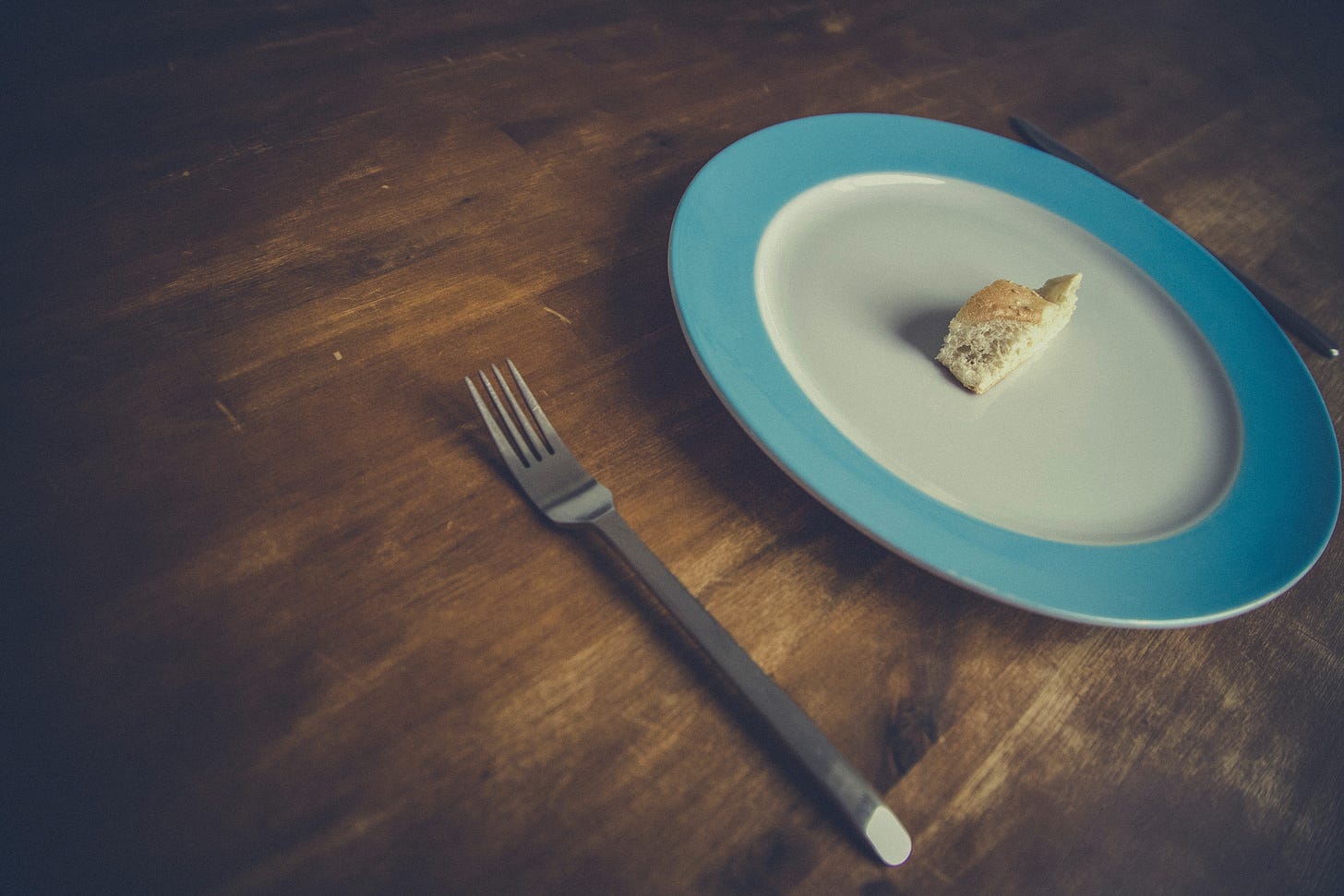On fasting
Peregrino Issue 17
I have intermittently practiced intermittent fasting (IF) for a few years now and have had positive outcomes when I have used it. It has helped me to lose weight at a steady pace that seems almost effortless. I’ve enjoyed the mental clarity it brings, especially during the hours before I break the fast. I follow a 16:8 protocol with an 8-hour feeding window from noon to 8:00 pm followed by a 16-hour fast. It’s easy for me to drink black coffee in the morning and have lunch as my first meal. I try not to snack between lunch and dinner, so I’m hungry at dinner time.
I follow this protocol from Monday to Saturday. On Sundays, I keep the eucharistic fast. Then, I usually attend the 8:30 am Mass, so I have my cup of coffee, receive Jesus, and have a proper breakfast once I get home.
I read Dr. Jason Fung’s “The Complete Guide to Fasting” when I was first getting into IF and started wondering if there was a book that dealt with this topic from the Catholic perspective. Enter Adalbert de Vogüé’s “To love fasting. The Monastic Experience.” The book was out of print, and a poorly scanned pdf version was all I could get my hands on until Carolina—Gustavo, my podcast co-host’s wife—surprised me with a copy. She’s notorious for locating rare volumes in thrift and antique stores.
It sat on my to-read pile until this Lent. What follows is a brief history of fasting in the Catholic Church, according to Mr. de Vogüé’s research.
Early Christians would fast on Wednesday and Friday, also called Station Days. They would fast until the ninth hour, which is about 3 pm. There’s also a wonderful tradition associated with several station Churches in Rome. To learn more about that, you should check out Jacob Stein’s Youtube Channel “Crux Stationalis,” where he has video tours of these Roman Churches.
Cenobite monks in Egypt around the year 325 would observe station days. On the other days, a communal meal was served at midday, and an optional second meal at night for “those who were fatigued, the old men and children, and during very hot weather” was offered.
In his letter to Eustochium in 384, St. Jerome talks about these cenobite monks taking one meal after gathering for prayer after the hour of None and doing this all year. During Easter, they would move the community meal to noon to satisfy the Church’s tradition that forbids fasting during these 50 days.
The Ordo monasterii, a set of regulations added to the Rule of St. Augustine, emerged in North Africa in 395. It prescribes manual work until noon and then reading for three hours. After that, the monks eat their meal. They would do this five out of seven days a week.
The Rule of the Four Fathers refers to Acts 3:1, “…Peter and John were going up to the temple at the hour of prayer, at the ninth hour [three o’clock in the afternoon],” and then adds, “Therefore we must observe this rule, never to eat in the monastery before the ninth hour, except on Sunday.” This was considered a testimony about fasting; it was thought the apostles would pray before eating.
These are the roots of 6th-century western monasticism fasting with St. Benedict and his rule. Six days a week, one meal at 3:00 pm. Lunch at noon with an optional dinner during Easter.
I’m far from fasting like a monk. But I do see the benefits to this practice. The time you would spend preparing and eating food could be spent in prayer or, in my case, preparing “first breakfast” for my hobbits. Fasting without prayer is dieting. And I admit I’m bad at offering fasts for a particular intention. But I’m working on it.
Like with anything worth doing well, it will take time and practice. Your body knows the times of day you usually put food in your belly, so you will start feeling hunger pangs around those times of the day. But here’s a secret, you can train your body to follow a new schedule. If you stop eating at 8:00, go to bed at 10:00, and wake up at 6:00, you only have 6 hours to go. Black coffee, green tea, and seltzer are your friends.
I’ve noticed that on days I fast, I have more patience and am willing to endure annoyances that may present themselves during the day with a better disposition. It’s not a silver bullet but it helps you grow in virtue.
Here’s a challenge, fast the two Fridays leading to Good Friday. Skip breakfast; offer it for your loved ones and see how it goes. If you hate it, let me know. The least I can do is offer to fast for you and your intentions.



